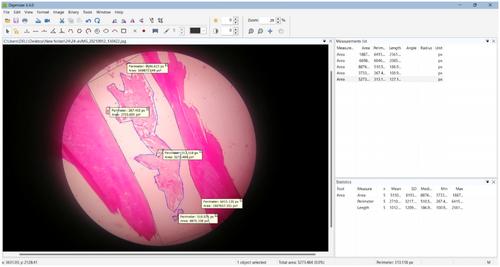This study aims to compare the application of three types of normal scaffolds—native chitosan, enzymatically modified chitosan, and blood clot (BC)—on pulp regeneration in the teeth of experimental dogs through histological examination, to determine the quantity and type of new tissues formed within the root canal.
The research sample consisted of 32 root canals from 20 premolars of two male local experimental dogs. The sample was randomly divided into a control group, in which no intervention was performed on the teeth, and three experimental groups based on the type of scaffold used: the BC group, the native chitosan combined with BC (NCS + BC) group, and the enzymatically modified chitosan combined with BC (EMCS + BC) group. Mechanical and chemical cleaning of the canals was performed, followed by the application of the studied scaffolds within the root canals. After 3 months, the teeth were extracted and prepared for histological study, where two variables were studied: the percentage of total vital tissue (soft and hard; VT%) and the percentage of soft vital tissue only (ST%). A one-way ANOVA and Bonferroni tests were used to determine significant differences between the groups at a 95% confidence level.
The VT% values were significantly higher in the EMCS + BC group compared to both the NCS + BC and BC groups. The ST% values were also significantly higher in the EMCS + BC group compared to the BC group. However, no significant differences in ST% values were observed between the NCS + BC group and either the BC or EMCS + BC groups.
Within the limitations of this study, we conclude that the application of enzymatically modified chitosan scaffolds combined with BC yields superior results in pulp regeneration, which contributes to the formation of pulp-like tissue and cells resembling odontoblasts, as well as apex closure with tissue resembling bone tissue.



